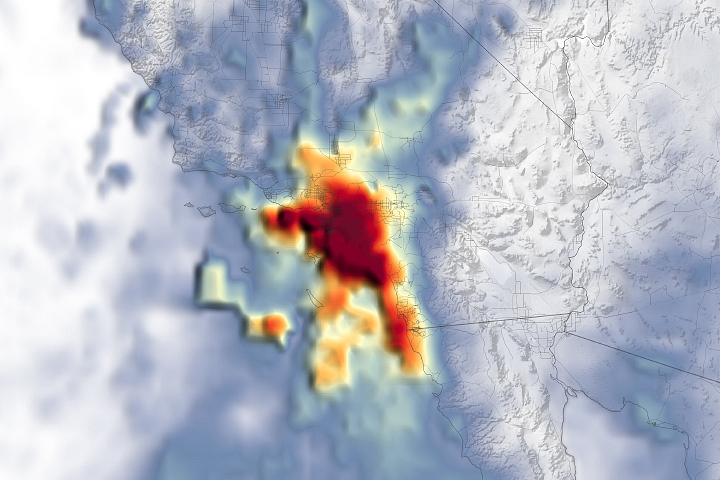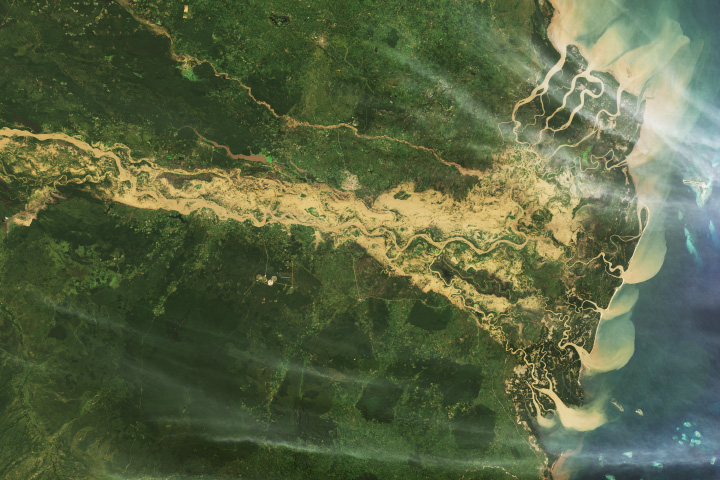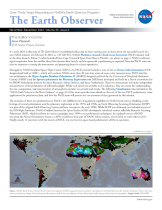- Home
- Missions
- Data
- Communications
- People
- The Earth Observer Newsletter




Recent Imagery
You will be directed to the NASA Visible Earth webpage when you select Images by Mission below, or click on the images at right that are randomly generated to represent four out of all possible topics.
The Earth Observer: Jan - Feb, 1996
In This Issue
Click title below to view page
PAYLOAD PANEL REPORT
EOS Payload Panel Meeting .... 3
SCIENCE TEAM MEETINGS
The 10th ASTER Science Team Meeting ... 9
SAGE III Science Team Meeting ... 12
ARTICLES
SAGE III Algorithm Review ....15
Availability of Questionnaire Analysis and EOSDIS Cost Model Documentation .... 18
Quality Assessment for MISR Level 2 Data....19
Organization and Implementation of Calibration in the EOS Profect ...... 22
The Cooperative University-based Earth System ScIEnce Education Program .... 27
MIsSIon lO Planet Earth Education ....... 28
JPL Physical Oceanography DAAC Users Working Group Meeting ...... 31
Release of Updated EOS Data Product Report .... 35
ANNOUNCEMENTS
Kudos ......... 11
USGS Maps Now Available on CD-ROM .... 30
NASA Science Institutes Plan Released .... 32
Improved Computerized Maps Available .... 33
NASA Awards Grant For Smithsonian Global Change Exhibit .... 34
McDonnell Douglas Aerospace Awarded Contract To Provide Med-Lite Services .... 36
NASA Airborne Sensor Aids Superfund Site Cleanup ........ 37
Jet Aircraft: How Large a Source of Atmospheric Pollution? ..... 38
EOS Science Calendar ... 38
Global Change Science Calendar ...... 39
Information & Inquiries .... Back Cover
Editor's Corner
Michael King—EOS Senior Project Scientist
The National Academy of Sciences Board On Sustainable _ Development (BSD) review of the MTPE/EOS component of the U. S. Global Change Research Program (USGCRP) has resulted in a substantial number of studies by NASA and the Pavload Panel since last September. On November 7-9, 1995, NASA convened a workshop at the Goddard Institute for Space Studies (GISS) to respond to the recommendations of the BSD to focus the tropospheric chemistry components of Chemistry-1 on the global distribution of ozone and its precursor gases. Over forty scientists from the U.S. and abroad participated in this workshop, including both tropospheric chemists (modelers, experimentalists, and remote sensing experts) and experts in the remote sensing and characterization of tropospheric aerosols. The workshop report (available on World Wide Web at http://spso.gsfc.nasa.gov/spso_homepage.html) contains the following tropospheric ozone conclusions: (i) a critical science need is to understand the mechanisms that control the distribution and temporal changes of tropospheric ozone and its precur sors (NOx, CO, hydrocarbons, water vapor), (i) the Tropospheric Emission Spectrometer (TES) offers the first and only planned opportunity for global and simultaneous mapping of tropospheric ozone and its critical precursors with suitable horizontal and vertical resolution, (iii) observations from space must be complemented by a strong program of in situ measurements from aircraft, (iv) rapid development of global tropospheric chemistry models is essential, and (v) space-based measurements must resolve the vertical distribution of ozone in the troposphere to allow interpretation of the data in terms of the effects of ozone on both climate and the biosphere.
Read more...

